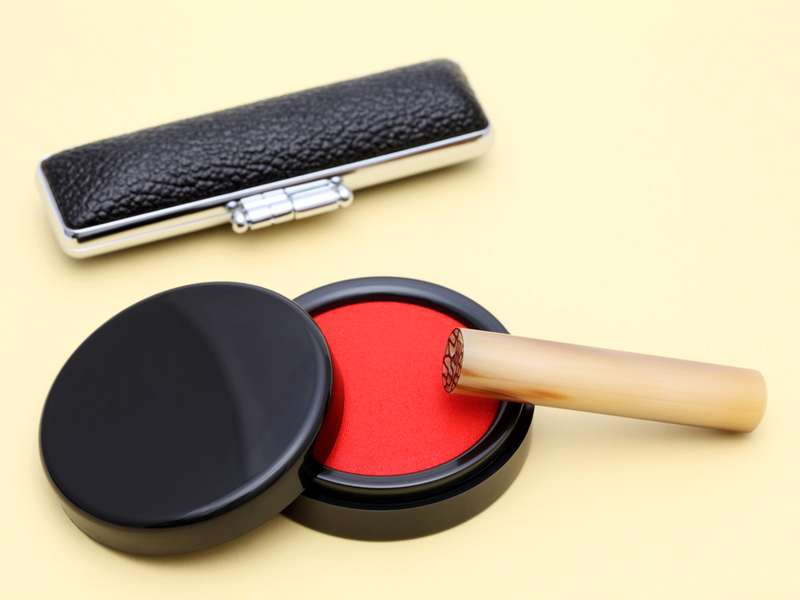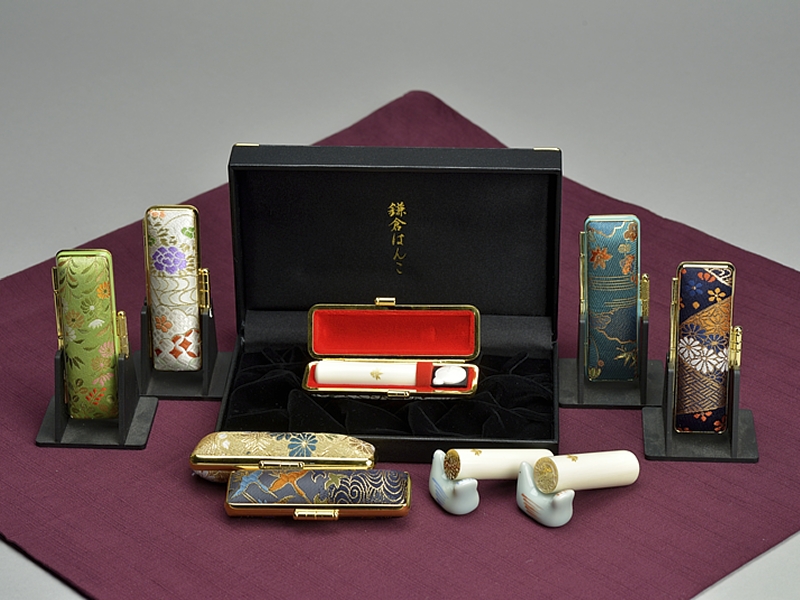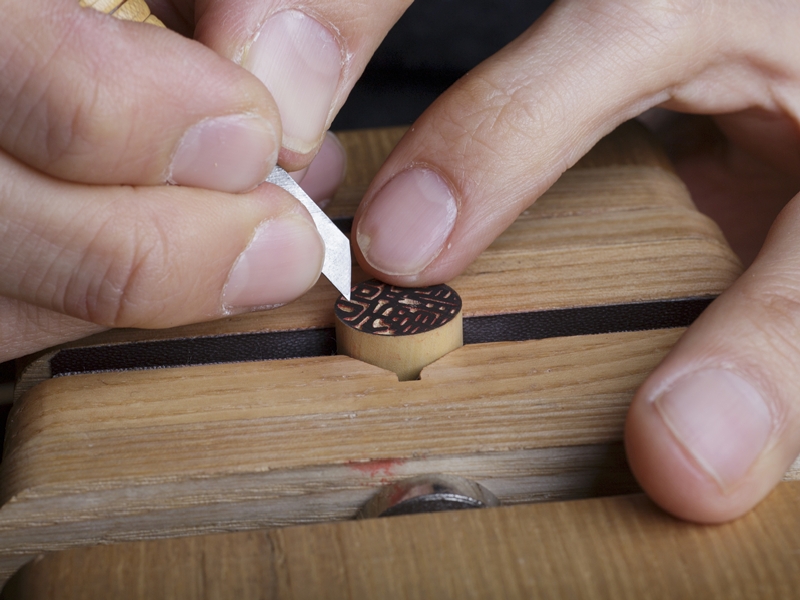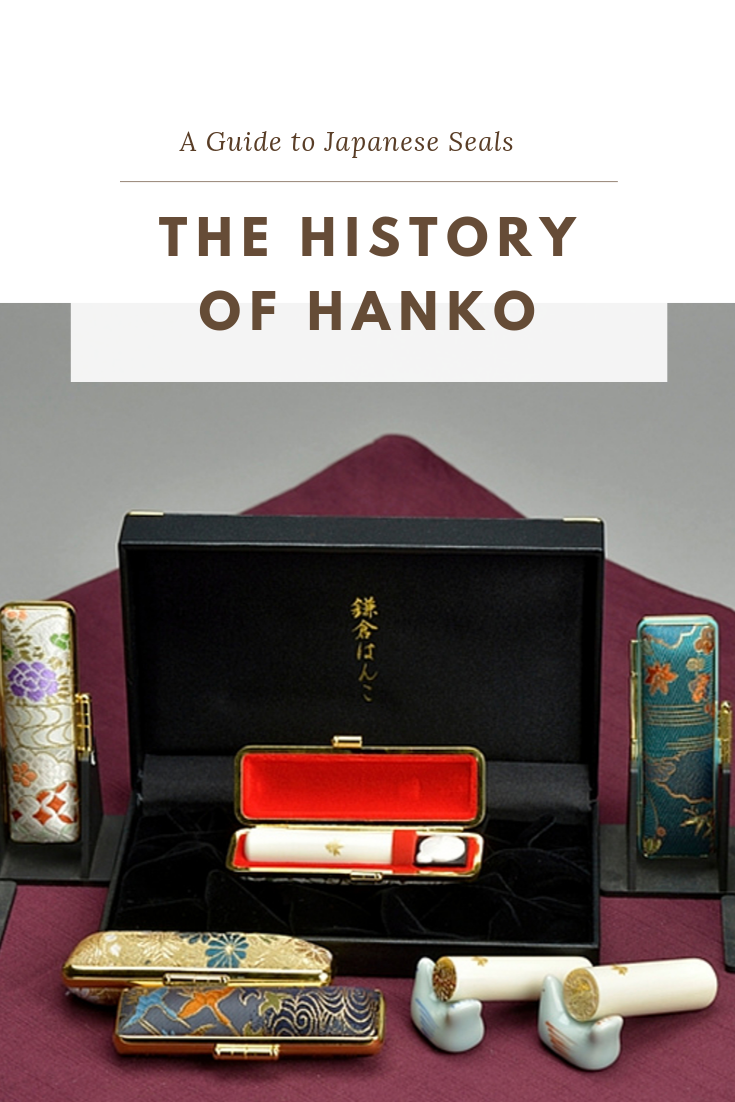Japan’s custom of using seals in lieu of signatures has been recorded for just under 2,000 years. However, its use by the general public as part of a national system only dates back 150 years.
What Is a Hanko, Anyway?
A hanko is, in short, a seal that is used in place of signatures on official documents and range from cheap, mass-produced plastic items to ornate, handcrafted works of art made with wood, bone, and other materials. Hanko are used by companies, shrines and temples (those with goshuincho will recognize the distinctive red seals in their books), and by individuals. Here is a breakdown of the most common uses for personal hanko:
- The jitsuin is the official registered seal, which allows you to sign for significant purchases such as cars, and take out mortgages. This is registered at the owner’s local ward office or city hall and comes with a certificate to prove authenticity.
- The ginkoin, or registered bank seal, is, as the name implies, used for any type of bank business. This includes opening bank accounts, transferring funds, and so on.
- The mitomein is for personal use. Most often it will be used for signing off documents at work or popped on a delivery receipt when the takkyubin guy drops by with a parcel.
Hanko vs Inkan — Inkan is technically the word for the red mark created by the hanko, but the two terms are often used interchangeably.
There will be a more detailed guide on hanko and their usage in an upcoming post.
When Was the First Hanko Used, and Why?
The culture of using seals dates back to 5th millennium BC Mesopotamia. It reached Japan by AD 57 — though it’s likely it was even earlier — but there is historical evidence from at least that year. After the Taiho Code (the administrative and penal code of the Taiho era) in 701, the Imperial family began using hanko for important contracts. Each emperor has a specific seal created especially for them, so as Japan crossed over from the Heisei era into the Reiwa era in 2019, the new emperor accepted his unique personal seal.
The aristocracy started getting seals made by the late Nara period, around 750, and samurai got into the game during the Kamakura period and beyond. It wasn’t until the Meiji Period (1868-1912) that the hanko became widely used by Japanese nationals across the country. The reason was a law that enforced a unified national system of certification, which finally allowed the general public to use their own personalized hanko.
The hanko has now become a cultural item passed down from generation to generation, and is an important item for Japanese people to confirm their “will” and “responsibility” in everything that’s signed between the government, corporations and individuals.
Hanko Today, Hanko Tomorrow
Despite fears of the hanko disappearing as banks increasingly allow handwritten signatures and digital methods of verification, the humble hanko still remains popular. Those in favor of phasing out the hanko complain that it’s part of an outdated system that needs to get with the times. However, proponents to remove it forget why it has lasted so long (and why it will remain in the future) — it’s an integral part of Japanese culture.
Basically, it’s more than “just” a stamp and follows a person throughout their lifetime. Hanko are used at the most significant moments in people’s lives: when submitting marriage certificates, registering births, purchasing cars and buying houses — even certifying death certificates. Because of this, hanko are increasingly popular gifts at weddings, coming of age day, and other important occasions. Given the hanko is synonymous with major life events in Japan, it won’t be going away anytime soon.
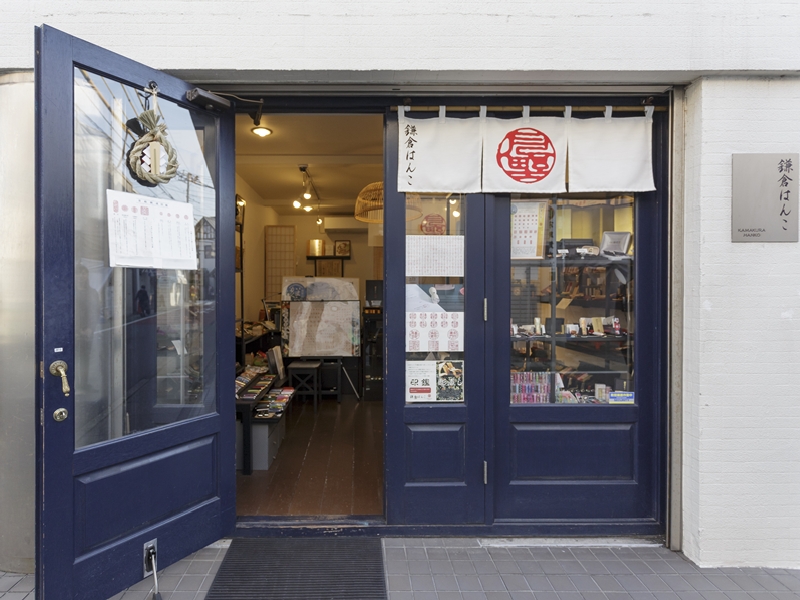
Want to Get Your Own Hanko?
Kamakura Hanko stocks a variation of hanko — from simple to sumptuous — and accompanying accessories to suit any need. They can make a fully customized piece using traditional craftsmanship, or you can choose from many of the ready-made ones available. For a truly unique hanko, join a Kamakura Hanko workshop to make your own.
For more information, visit:
www.kamakuraseal.com/
www.kamakurahanko.com/
Coming soon: more uses for hanko and hanko etiquette!
Sponsored Post
Updated On April 26, 2021

